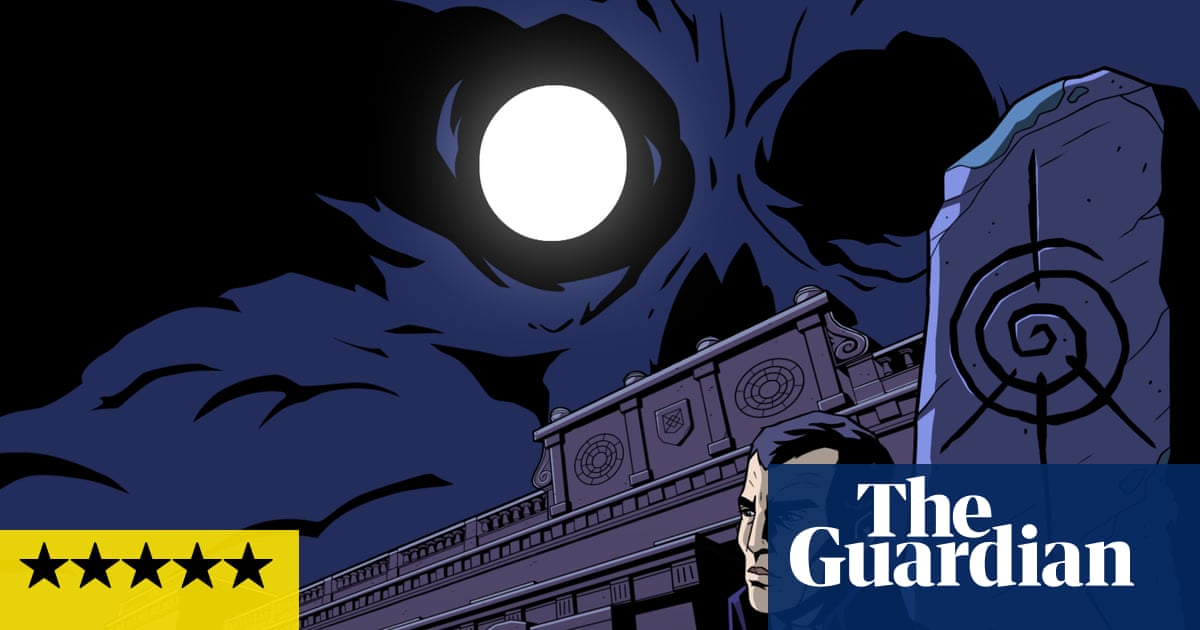In 2016, Apple announced that its gun emoji, previously a realistic grey-and-black revolver, would henceforth be a green water pistol. Gradually the other big tech companies followed suit, and now what is technically defined as the “pistol” emoji, supposed to represent a “handgun or revolver”, does not show either: instead you’ll get a water pistol or sci-fi raygun and be happy with it. No doubt this change contributed significantly to a suppression of gun crime around the world, and it remains only to ban the bomb, knife and sword emoji to wipe out violence altogether.
As Keith Houston’s fascinatingly geeky and witty history shows, emoji have always been political. Over the years, people have successfully lobbied the Unicode Consortium – the cabal of corporations that controls the character set, including Google, Microsoft, Meta and Apple – to include different skin colours and same-sex couples. It was easy to agree to add the face with one eyebrow raised, the guide dog and the egg. But not every request is granted. One demand for a “frowning poo emoji” elicited this splendid rant from an eminent Unicode contributor, Michael Everson: “Will we have a crying pile of poo next? Pile of poo with tongue sticking out? Pile of poo with question marks for eyes? Pile of poo with karaoke mic? Will we have to encode a neutral faceless pile of poo?”
Contrary to popular belief, the word “emoji” has nothing to do with emotions, but instead combines the Japanese terms for “picture” and “written character”. The origin of such sets of symbols has been determined by dogged tech researchers to stretch back much further than the first iPhone, or even the regular mobile phones and electronic PDAs that preceded them. A basic set of emoji could be found in the operating systems of some 1980s electronic typewriters and word processors from manufacturers such as Sharp and Toshiba.
Long before that, Houston notes, humans used pictographic characters such as hieroglyphs. Later, movable type saw an efflorescence of publishers’ symbols such as the pilcrow (for a new paragraph) and the lamentably under-used manicule (a tiny pointing hand in the margin). And before emoji proper there was a craze for smileys, or emoticons, made out of regular alphanumeric characters, such as the excellent shrug, still sometimes encountered in the wild: ¯\_(ツ)_/¯
Indeed, Houston makes the intriguing argument that the age of the mechanical typewriter represented an unusual historical interlude of expressive poverty. Once humans were freed from the unnatural restrictions it imposed, there was bound to be a new flourishing of symbolic play.
Such considerations often lead the unwary to suppose that emoji might constitute a “language”, which they definitely don’t. To demonstrate why, Houston recalls the Emoji Dick stunt of 2009, whereby developer Fred Benenson had thousands of people contribute to a crowd-sourced “translation” of Herman Melville’s Moby-Dick into emoji. If this were a bona fide language, it should be possible to translate Emoji Dick back into something close to the original with no knowledge of the source text. It isn’t.
As Houston argues, then, emoji are possibly a “script” (a method of writing), and a set of emoji might be a lexicon (a vocabulary), but you can’t communicate anything complex in emoji. It is better, perhaps, to think of emoji as an expanded palette of expressive punctuation.
Where next, then, for these little yellow blobs of joy? Unicode has no intention of adding any more flags, the least used category of emoji. The second least popular kind, oddly, is mammals, a fact that has me determined to use more cat faces in future. At some point they will surely have to retire the floppy disk emoji, a picture of an obsolete storage format that millions of younger people have never even seen. Should we even be able, Houston wonders, to create our own custom emoji? As someone who is grateful he doesn’t have to reinvent the full stop every time he reaches the end of a sentence, I doubt most people could be bothered.

 3 months ago
47
3 months ago
47

















































